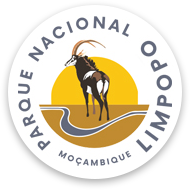Sharing benefits of the Great Limpopo Transfrontier Park with those that live around it has been an important objective since its inception, and a strategy of how to attain this is taking shape.
Following a series of meetings in November 2015 to thrash out details of how communities living on the borders of the protected areas can benefit from conservation, the Great Limpopo Transfrontier Park (GLTP) Joint Management Board has commissioned the development of an integrated livelihoods diversification strategy focused on areas adjacent to the core area, in other words the broader Great Limpopo Transfrontier Conservation Area (GLTFCA).

Already, there has been considerable investment of time and resources into rural development initiatives in communities surrounding the protected area. Management of the parks in question, namely the Gonarezhou National Park in Zimbabwe, the Kruger National Park in South Africa and the Limpopo National Park in Mozambique, are themselves asking similar questions through planning processes that focus on buffer or integrated land-use areas. In particular, efforts focus on how these protected areas can support socio-economic development in the areas that surround the parks. In general, these initiatives support government plans with overlapping mandates.
However, like much of the billion dollar aid and development industry, livelihoods development and support initiatives continue to face considerable challenges in achieving sustained and sustainable socio-economic development to the benefit of vulnerable rural households.
As such, the GLTP JMB’s strategy development initiative recognises the value of these existing efforts and does not seek to replace them or duplicate efforts. The GLTP JMB acknowledges that it cannot be the engine that drives future livelihood initiatives. Instead, it is best positioned to:
- Play the role of a convener or facilitator by bringing together a diversity of institutions, people, views and experiences, thereby promoting the integrated regional development of a shared vision and understanding of opportunities and ideas;
- Play a coordinating function by encouraging information sharing and a coordination of efforts; and
- Play a support function, actively empowering actors in their efforts.

According to Piet Theron, GLTFCA International Coordinator, “It is our belief that a strategy document will help achieve these goals and should leave all actors in the space better equipped to achieve successes with their future livelihood investments. The success of implementation of the strategy will depend on how well we all work together to achieve the goals we set ourselves. If we agree on what the important focus areas are, then we can become the masters of our own destiny who set the priorities and then find the resources to match. For this to happen we all need to work together to turn the strategy into action. But first, we need to agree on what our vision and strategy is.”
Elements of the GLTFCA integrated livelihoods diversification strategy will be discussed further at a third workshop on 16 and 17 February 2016 at the Mopani Rest Camp in the Kruger National Park. This workshop will also focus on the Pafuri node and explore an approach to prioritise resources and opportunities.
If you are interested to know more or become involved in the process, please get in touch with Piet Theron or Lisa van Dongen.
Objectives of the integrated livelihoods diversification strategy
Identify a set of strategic nodes for priority attention in round one of the strategy implementation (Pafuri is one of the nodes and others will be identified during a February workshop);
Identify and investigate workable and appropriate livelihood models that could be applied to the area, including identification of where existing initiatives are working and can be scaled and shared to a wider audience; and
Ensure that the impact of climate change has been considered when identifying livelihood interventions for resilience.
Milestones achieved
A scoping exercise was undertaken to define the scope of the project and understand the context, what is already in place and where the opportunities and constraints may be looking forward. The result of this study is available here.
In November, two workshops were undertaken in Maputo and Harare respectively. The first explored the key drivers of change that should be designed in the future. The second conducted an ecosystems goods and services analysis of the next 15 years in the Pafuri area. This resulted in a projection of how climate change could change the future and what management options would be most significant in helping curb these impacts. The outcome of the Harare workshop highlighted harrowing projections around how climate change will heighten the risks around water and food security, in particular. An exercise looking at various management interventions also delivered the very sobering conclusion that, even with enormous efforts and resources in place, the material improvement of the current situation for most people, in particular around water supply, is not possible. There are, however, opportunities to (i) prevent or minimise the losses to climate change and (ii) strengthen and build on opportunities that already exist for subsistence activities and formal income generation. Click here for details
Three strategic pillars for consideration in the strategy
- Promotion of ‘climate smart’ villages, focused on food, water and energy security;
- Natural areas management, including wildlife production and associated tourism development as well as livestock and range land management; and
- Human capital interventions which empower people with choices and reduce land dependence.
Story by Piet Theron
International Coordinator

